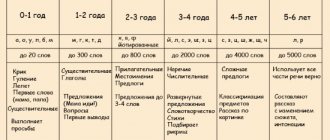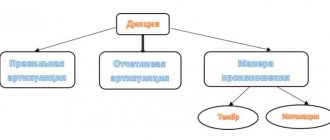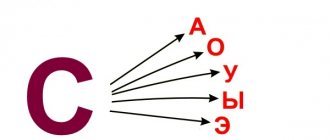Formation of reader interest
There are rules that help to properly develop literary reading skills in a child:
Exercise 9. “Oh, once! Again!"
For this exercise we will need a stopwatch and a text to read.
Read for 1 minute. We pay attention to reading speed, but you can forget about expressiveness for now. Ready? Go!
The minute is up. Stop! Let's make a mark where we left off.
Let's rest a little and read the same text again. Go! In a minute we make a notch. Wow! Already more.
What will happen the third time? And the third time will be even better!
What does this give us? Increase reading speed. And the child's motivation. He will see for himself that he is capable of more.
"Re-reading" technique
This technique also involves reading the text multiple times. Children are given 1 minute to read. Then you need to count the number of words they can read in the allotted time. After this, this task is performed a couple more times.
The results will gradually improve, and this will allow the child to believe that he can read faster. When students read the text for the last time, there is no time limit. Thus, they will switch to reading unfamiliar text and read it at a faster pace.
Techniques for expanding your angle of vision
In the process of reading, the number of characters that fall into the child’s field of vision matters. To expand the angle of peripheral vision, it is recommended to offer children the following exercises.
Schulte tables
Schulte tables contain numbers from 1 to 30, which are arranged in a chaotic order. Students need to find and indicate each number in order in 30 seconds. After a few days, you should offer another version of the table.
- See Schulte Table Generator Online.
Find the word
The essence of this exercise is similar to the previous one. On a piece of paper you need to write several different, not very long words in random order. The task for schoolchildren is to find words on a sheet of paper as quickly as possible, which the teacher will name one by one.
Word pyramids
For such exercises, words are written in a column, starting with the word with the fewest letters. Each word is divided into two parts, which are written at some distance from each other. On each subsequent line this distance increases.
First - last
You can use any text for this exercise. Children only need to read the first and last syllable of each line.
Reading frame
It is necessary to prepare a strip of cardboard with a slot, the height of which is slightly greater than the height of the letters in the textbook. The width should be small, about 3 - 4 letters. While reading, the child moves this frame around the text. After a certain time, the width of the frame should be gradually increased.
Over time, children remember many words that appear frequently in texts and perceive them as a whole. They no longer read such words, but name them right away. This skill significantly saves time when reading, so this skill needs to be purposefully developed.
Weekly program of classes to improve diction
I know firsthand how difficult it is to apply other people’s advice in life, even if it’s at least three times brilliant and super useful. Within an hour after reading the article, only 40% of the information received will remain in your head. This means that 6 out of 10 tips and exercises will be unclaimed.
To avoid this, I created a mini-program for working on diction. Copy it somewhere or save the article to your bookmarks so you can do the exercises every day.
Monday:
- Talk for 15 minutes with a clenched pencil in your teeth, walnuts or a cork in your mouth;
- read aloud an excerpt from a book of about 1 page;
- perfect the pronunciation of one tongue twister;
- practice the sounds K and G.
Tuesday:
- Talk for 15 minutes with a clenched pencil in your teeth, walnuts or a cork in your mouth;
- recite any poem you know by heart;
- voice an excerpt from your favorite cartoon;
- practice the sounds Ж and Ш.
Wednesday:
- Talk for 15 minutes with a clenched pencil in your teeth, walnuts or a cork in your mouth;
- record any passage on a dictaphone, listen to the recording and note all speech defects;
- correct them and record the passage again;
- practice the sound C.
Thursday:
- Talk for 15 minutes with a clenched pencil in your teeth, walnuts or a cork in your mouth;
- read any passage out loud as slowly as you can;
- practice pronouncing difficult words;
- practice the sounds B and P.
Friday:
- Talk for 15 minutes with a clenched pencil in your teeth, walnuts or a cork in your mouth;
- learn by heart several complex tongue twisters;
- practice the sounds Z and S.
Saturday:
- Talk for 15 minutes with a clenched pencil in your teeth, walnuts or a cork in your mouth;
- practice pronunciation of prepositions ending in a consonant.
Sunday:
- Talk for 15 minutes with a clenched pencil in your teeth, walnuts or a cork in your mouth;
- read 2 pages of any text, clearly pronouncing the endings.
Exercises to develop diction
So, we've sorted out the tips. I hope you will not neglect them and introduce at least a couple into your daily life. Now let's move on to specific practical exercises. They are suitable for adults and children from 7–8 years old. You can perform them at home.
Tongue Twisters
Tongue twisters are great for training the pronunciation of sounds and clarity of speech. As a rule, each tongue twister is aimed at practicing a specific sound or combination of sounds. Therefore, I recommend that you first work with those sounds that have problems in pronunciation, and then train all the others.
Here are a few short tongue twisters:
- The crab made a rake for the crab and gave the rake to the crab. Rake the gravel, crab.
- Grass in the yard, firewood on the grass. Don't cut wood on the grass in your yard.
- Advertising for grips has seams with coverage, but potholders without coverage have been snatched up.
- The Queen gave the gentleman a caravel.
Conversation with obstacles
Squeeze the pencil tightly with your teeth and say 10-15 phrases. Try to speak as clearly as possible.
You can also use unshelled walnuts or champagne corks instead of a pencil. Place one nut on each cheek and try to make a small speech. You can recite your favorite poem or read an excerpt from a book.
After this exercise you will immediately feel the effect. Speaking with a free mouth will become much easier.
Voice acting
Actors who voice characters in films and cartoons have excellent diction. Try yourself in this interesting role. Take a short clip of the film and learn the characters' lines. Then play this passage on silent and voice it. Be sure to record the voiceover on a voice recorder.
It is unlikely that you will be able to voice it properly the first time. Try until you achieve perfect pronunciation and expression.
Pronouncing difficult words
By difficult words I mean words with a combination of letters that is difficult to pronounce. When you encounter them for the first time, it will be very difficult for you to read them without errors right away. But once you have thoroughly practiced the pronunciation, you will no longer have problems with these words. Say them slowly at first, and then as quickly as possible.
Here is a list of words for example:
- who took advantage
- P.S,
- illustrated
- phantasmagoric,
- disheveled,
- reverb,
- over-anxious,
- counter-breakthrough
Start with this list. When you can pronounce all the words clearly and beautifully without a single hesitation, make a new list.
Practicing the sounds Ж and Ш
Say the following pairs of words as clearly as possible: “fat - wide”, “heat - ball”, “frog - hat”, “live - sew”, “creepy - joke”. Then read the tongue twister: “The crane Zhura lived on the roof of Shura. The crane Zhura lived on the roof of Shura.”
Practicing sounds K and G
Repeat the following pairs of words until you can pronounce them quickly and clearly: “year - cat”, “Gesha - Kesha”, “goal - stake”, “guest - bone”, “bend - whip”, “goal - stake”. Then read the tongue twister: “Klusha Glasha prepared porridge with pear. And Glasha treated Klusha to yogurt.”
Practicing sounds Z and S
Read the following words: “gaze - rubbish”, “tooth - soup”, “zev - sow”, “green - salty”, “Zoyka - jay”. Then say the tongue twister: “The snake snaked, the snake laughed, the snake laughed, the snake laughed.”
Practicing sounds B and P
Read the following pairs of words: “bar - steam”, “ball - fell”, “pain - field”, “bravo - right”, “board - port”, “white - sang”. Read the tongue twister: “The bull is blunt-lipped, the bull is blunt-lipped, the bull has a white lip and is blunt.”
Practicing the sound C
Repeat the pairs of words: “heron - saber”, “street - fox”, “color - light”, “clack - juice”, “circus - cheese”, “target - mudflow”. Read the tongue twister: “The prices of valuables are priceless for valuables from antiquity.”
Prepositions
Combining prepositions that end with a consonant with words that begin with a consonant is a weak point for many. You need to learn to pronounce them clearly and articulately.
Read the following phrases out loud until your pronunciation is perfect:
- to Boris, to Makar, to Gordey, to Katya, to Galina, to Trofim, to Glasha;
- from the road, from the sidewalk, from Broadway, from the platform, from the tree, from the bird market;
- over the village, over the firewood, over the grass, over the steep, over the brother, over the test tube, over the door;
- under the block, under Tver, under Torzhok, under the sleepers, under the helmet, under the drill, under the building;
- in a crow's nest, in a lantern, in troubled times, on sale, in adulthood, in a vase, in physics.
Endings
Another common problem among Russian speakers is swallowing endings. Learn to pronounce endings as clearly as the rest of the word. When reading aloud, make a special emphasis on them. You can even raise your voice slightly, since most often we pronounce endings more quietly than necessary.
Spelling
Writing a text without any spelling or punctuation errors is quite difficult even for specialists. Our automatic spell checker can help professionals, students, website owners, bloggers and authors produce text with virtually no errors. This will not only help them correct the text, but also provide them with information about why the use of the word is incorrect in a given context.
What is included in text checking?
- grammatical errors;
- style;
- logical errors;
- checking capital/lowercase letters;
- typography;
- checking punctuation;
- general spelling rules;
- additional rules;
Grammar
130 rules to find grammatical errors
.
- Participle and preposition
- Participle and preposition
- “Not” with adjectives/participles
- "Not" with adverbs
- Numerals “both/both”
- Adjective-noun agreement
- Number of verb with homogeneous members
- And others
Grammatical errors like: “Walking down the street, my shoelace came untied.”
- Grammatical error: Walking down the street, I...
- To put it correctly: When I was walking down the street, my shoelace came undone.
Reception "Tug"
The “Tug” technique is used to increase the pace of reading. The leader can be a teacher or a student with a high reading technique. He reads the text, and the rest should try to keep up with him. This exercise can be done for the whole class or in pairs.
To control the reading process of all students, you can make sudden stops and ask the children to show the last word read in the text. Another way is to make mistakes while reading. Those who read “in tow” should notice them and correct them.











